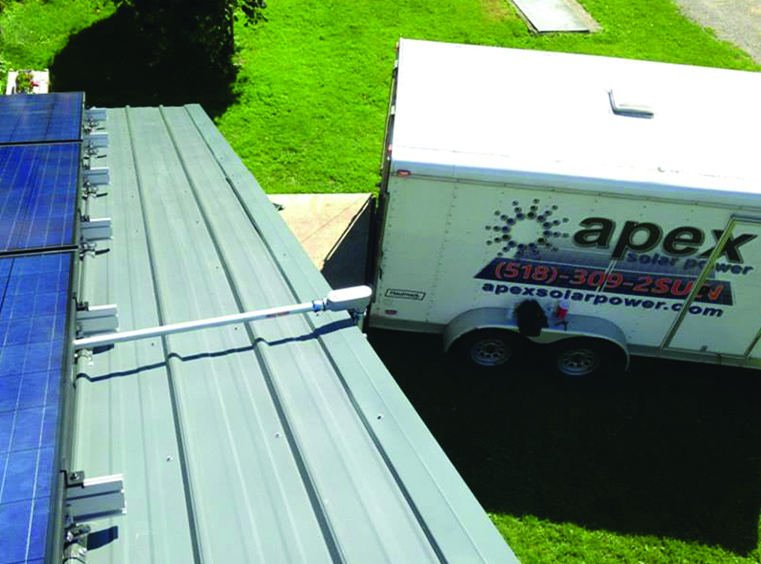
BY ANDREA PALMER
Tax incentives for converting to solar energy are
coming to an end, but the demand for clean energy
continues to grow.
Frank McCleneghen of Active Solar Development
in Galway, has seen commercial demand
grow.
“We’ve shifted away from doing only solar electric
[projects] as the incentives have decreased. We
have seen the larger commercial business industry
become much more competitive and the margins
tighter than they were before,” said McCleneghen.
In July, New York state announced that the
growth of solar power has increased more than 300
percent from 2011 to 2014, twice the rate of U.S.
solar growth overall. The increase was attributed
to state initiatives to build a clean, resilient and
affordable energy systems.
“Solar is at a point today where it is both affordable
to own and lease,” said Ben Sopczyk,
marketing director and project manager for Apex
Solar Power in Queensbury. “It offsets the known
cost of electricity associated with home or business
ownership that has increased in price on average over the last 30 years. You save money every month
with your system, and you increase the equity value
of your home or business.”
He said the demand for solar power has grown
steadily, especially in recent years.
“In the United States right now, a new solar
project is being installed every 20 minutes,” said
Sopczyk. “The growth has been huge.”
He said two years ago, his staff was about 10
total employees in one office. “Today, we have
over 80 employees in three offices: Queensbury,
Syracuse, and New Windsor. While we have been
in business for much longer than that, the growth
has been exponential in the past few years due to
the current incentive levels and the drop in solar
equipment prices.”
McCleneghan said Active Solar has found success
in strategic relationships.
“We have had really good success working with
property developers, installing solar hot water in
commercial buildings. We’re working with Omni
Development to install thermal hot water in a
12-story commercial building in Albany. We are doing their domestic hot water for a hundred units.
The solar is picking up 50 percent of the load on
that and cutting down on their fuel costs while
capturing the tax incentives,” he said.
Sopczyk said the conversion to solar energy was
“extremely simple”.
“The only requirement is a place to put the
solar system that receives sunlight 80 percent of
the year,” he noted. “We take care of all permit,
incentive and utility applications. We can provide
financing as well. As far as the actual ‘conversion’
goes, nothing changes in the {provision of service
to the} home or business,” he said.
He said solar energy can be used year-round,
despite long upstate winters.
“Solar produces electricity over the entire
year. When the system is installed, the utility
company provides a new ‘net’ meter that tracks the
electricity produced by the system, and what is used
on the property. Extra energy credits are built up
in the summer to be used in the winter, so at the
end of 12 months, your system has produced all the electricity that you have used, and your annual
net usage becomes 0 kilowatt hours. This offsets
everything on the bill that is calculated based on
the usage. This means both the supply and delivery
are offset,” he said.
Tax incentives from previous years for converting
to solar energy are decreasing and will soon
end altogether. But Sopczyk said the investment
is worth the up-front cost.
“The average home recoups its costs in 4-8 years,
and a business can recoup in 4-6. And aside from
the usage savings and easier planned monthly
costs, businesses gain a 30 percent tax credit
based on the system cost, and can depreciate the
cost of the system to additional tax savings,” said
Sopczyk. “With these two incentives and the help
of NYSERDA incentives, up to 65 percent of the
system cost can be recouped with these tax and
depreciation credits,”
“The benefits are tangible, the incentives are
helping and they will not be here for much longer,”
stated Sopczyk.
